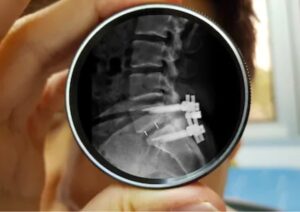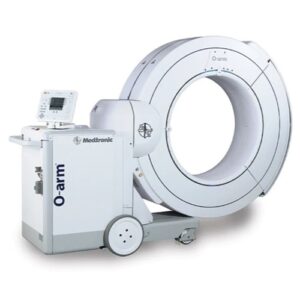Can Cervical Spine Tumours Be Treated? Your Guide to Recovery
Cervical spine tumors are a serious medical condition that can affect both mobility and overall health. These tumors, which develop in the uppermost part of the spine (the cervical region), may cause pain, neurological symptoms, and if left untreated, could lead to severe complications. However, with advancements in medical treatment and surgery, there is hope for patients diagnosed with this condition. This blog will guide you through understanding cervical spine tumors, their symptoms, causes, diagnosis, treatment options, and the recovery process.
What Exactly Are Cervical Spine Tumours?
Cervical spine tumors refer to abnormal growths that develop in the cervical region of the spine. Tumors can develop as benign, meaning non-cancerous, or malignant, which are cancerous. Depending on their location, they can affect the bones, nerves, or spinal cord, causing pain, discomfort, and even paralysis. Although cervical spine tumors are rare, their potential impact on the body’s nervous system and overall function makes early detection and treatment critical.

Recognizing the Symptoms of Cervical Spine Tumours
Cervical spine tumors can present a wide range of symptoms, often depending on the tumor’s size, type, and location. Some of the most common signs to watch for include.
- Neck pain: Persistent pain in the neck or upper back may be an early sign of a tumor.
- Numbness or tingling: Patients may experience numbness, tingling, or weakness in the arms, hands, or legs.
- Balance issues: Tumors that press on nerves can lead to problems with coordination and balance.
- Difficulty walking: A tumor that affects the spinal cord may lead to mobility issues, causing difficulty in walking or standing.
- Loss of bladder or bowel control: In more advanced cases, patients may experience incontinence.
If you notice any of these symptoms, it is essential to consult a specialist for an accurate diagnosis and treatment plan.
What Causes Cervical Spine Tumours?
The exact cause of cervical spine tumors is not always clear, but several factors could contribute to their development. Some are primary tumors, originating in the spine, while others are secondary or metastatic, meaning they have spread to the spine from other parts of the body. Potential causes and risk factors include.
- Genetic mutations: Certain tumors may result from genetic changes or conditions inherited through family genes.
- Cancer spread (metastasis): Cervical spine tumors are sometimes a result of cancer in other parts of the body, such as the lungs, breasts, or prostate, that has metastasized to the spine.
- Immune system suppression: Individuals with weakened immune systems due to illness or medication may be at higher risk of developing spinal tumors.
Understanding the root cause of the tumor is vital in determining the best course of treatment.
How Are Cervical Spine Tumours Diagnosed?
An accurate diagnosis is critical for designing a successful treatment plan. To diagnose cervical spine tumors, medical professionals may use a combination of the following methods.
- Physical examination: Doctors will first evaluate your medical history and perform a physical examination, checking for neurological deficits or signs of tumors.
- Imaging tests: Diagnostic imaging such as MRI (Magnetic Resonance Imaging), CT (Computed Tomography) scans, or X-rays can help doctors get a detailed view of the spine and locate any tumors.
- Biopsy: In some cases, a biopsy may be required to determine whether the tumor is benign or malignant.
Once a diagnosis is made, your doctor will discuss the best treatment options for your condition.
What Are the Treatment Options for Cervical Spine Tumours?

Treatment for cervical spine tumors depends on factors such as the tumor’s size, type, and location, as well as the patient’s overall health. The top 10 spine hospital in Ahmedabad often provide a variety of treatment options, including.
- Observation: For small, non-cancerous tumors that are not causing significant symptoms, doctors may recommend monitoring the tumor over time with regular imaging tests to track its growth.
- Surgery: Spine tumor surgery is often the first line of treatment, particularly if the tumor is causing pain, neurological symptoms, or spinal cord compression. Removing the tumor as much as possible while maintaining neurological function is the goal of surgery.
- Radiation therapy: This treatment may be used after surgery to eliminate any remaining tumor cells or to shrink tumors that cannot be entirely removed.
- Chemotherapy: Chemotherapy is sometimes used to treat malignant tumors or tumors that have metastasized from other areas of the body.
- Steroid treatment: Doctors may prescribe steroids to reduce inflammation and swelling around the tumor, which can alleviate symptoms and improve patient comfort.
Understanding the Treatment Process for Cervical Spine Tumours
Once a treatment plan is established, the process typically begins with pre-operative planning, particularly for patients undergoing surgery. This involves detailed imaging and consultations with surgeons to determine the best approach for tumor removal.
During surgery, highly skilled spine surgeons work to remove as much of the tumor as possible without damaging surrounding nerves or spinal structures. Depending on the case, radiation or chemotherapy may be recommended after surgery to ensure any remaining cancer cells are targeted.
Aftercare and Long-Term Maintenance
Recovery from spine tumor surgery can take time, but post-surgical care is essential for achieving the best outcomes. Aftercare typically involves.
- Physical therapy: Physical rehabilitation plays a vital role in helping patients regain strength, mobility, and function. A structured physiotherapy program will help patients recover faster and return to their daily activities.
- Follow-up appointments: Regular follow-up appointments and imaging tests are necessary to monitor for any signs of tumor recurrence or complications.
- Emotional support: Adjusting to life after a tumor diagnosis can be challenging, and patients may benefit from emotional counseling or support groups to help them cope with the physical and mental effects of their illness.
Patient Testimonials

At IndoSpine Hospital, we believe in offering comprehensive care to our patients, from diagnosis to recovery. Our patient testimonials provide insight into the journeys of those who have undergone cervical spine tumor treatment. These stories highlight the importance of early diagnosis, expert care, and a strong support system in achieving a successful recovery.
Why Choose Us?
At IndoSpine Hospital, we are proud to be one of the best spine hospital in Ahmedabad, offering advanced treatments for cervical spine tumors and other spinal conditions. Our expert team provides personalized care to ensure the best outcomes for each patient. With modern technology, experienced surgeons, and compassionate aftercare, we help patients live healthier, pain-free lives. Early diagnosis and proper treatment are key to managing cervical spine tumors. Whether through surgery, radiation, or rehabilitation, treatment options are available to improve quality of life. If you notice symptoms, visiting a specialized spine hospital is essential for the best care.



